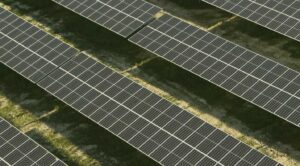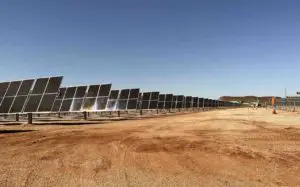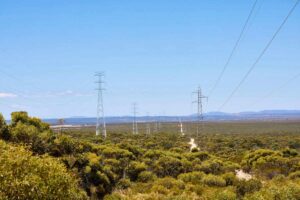This article is the foreshadowed second part of a two part series examining the AEMC’s draft decision on network charges for export to the distribution system.
The first part is here. It critiques the AEMC’s claims that there are “traffic jams” on the distribution network attributable to rooftop solar and concludes that the AEMC has been gullible in believing the scuttlebutt and ignoring the publicly available evidence.
This second part examines the merits of the rule change proposals from the Total Environment Centre (TEC), the Australian Council of Social Services (ACOSS), the St Vincent de Paul Society (STVP) and SA Power Networks (SAPN).
It also examines the merits of the Australian Energy Markets Commission’s (AEMC) decision that distributors should charge for electricity injected into distribution networks.
So, what did these rule change proposals propose and what is their underlying reasoning? Let’s focus first on ACOSS and STVP.
Their proposal is motivated by their belief that households with rooftop solar are being subsidised by others and so should be made to square things up by paying to use the network that evacuates their surplus rooftop solar.
Why do they believe there is a cross-subsidy?
This is not entirely clear to me – they provide no substantive evidence of this – but the gist of it seems to be that they believe meaningful amounts of expenditure are being incurred to accommodate the exports of households with rooftop PV and that this expenditure is not being recovered from those households.
They dismiss the evidence that I have presented to them that in fact this is not true and, in addition, that wholesale price effects swamp any plausible estimate of the impact of lower network throughput (when consumers make their own electricity) on network prices.
From conversations with the ACOSS representatives, it seems they are motivated particularly by the “principle” that the rich should be made to pay for rooftop solar exports. But, as I say, the evidence is that all customers gain from rooftop solar, through lower prices.
Furthermore the evidence is that, proportionately, rooftop solar uptake is the highest in middle and lowest socio-economic areas and the lowest in the highest socio-economic areas. Where then, is the supposed transfer from the rich to poor that needs to be righted?
Turning to TEC and SAPN’s perspectives – which are very similar – the rationale they present is, essentially, that if networks can charge for injections as well as withdrawals they will look on injections with less antipathy.
Accordingly TEC argues (and the AEMC agrees) charging consumers to export rooftop solar will in fact encourage rooftop solar development.
It is surely hard to argue that if networks are allowed to clip the ticket on injections they will be inclined to encourage injections (or at least not oppose them). TEC’s sympathy for this perspective sounds like solid realpolitik.
But would not those running a protection racket make the same arguments? Who is in charge here: the networks or the governments and consumers that provide their legal and social licence?
Why do distributors need to be paid for something that does not impose any meaningful additional cost?
The AEMC has, essentially, accepted TEC and SAPN’s argument. The change the AEMC is recommending is profound: that distribution be defined as a service that provides for injections and withdrawals and that distributors are therefore entitled to charge for both.
Quite what this means in practice they leave to be worked out by the distributors and the Australian Energy Regulator in a negotiation with consumers (yes I sympathise with you, “negotiation” with a monopoly is a contradiction in terms, no?).
We don’t need Sherlock Holmes to point out the obvious inconsistency that arises between the definition of distribution that the AEMC proposes and the arrangements for transmission access (which do not charge generators for their use of the shared transmission system).
So, to give this some contemporary meaning, let’s take a quick look at the biggest power station that is being developed in the history of the National Electricity Market, by Snowy Hydro.
This power station – Snowy 2.0 – is about as far as you can get from both Sydney and Melbourne. Snowy Hydro will pay nothing towards the (at least) $3 billion of to-be-built “shared network” to get their electricity to market. Instead, electricity consumers in New South Wales and Victoria will pick up the tab at around $560 per connection.
While Snowy Hydro gets away scot-free, the typical household in NSW or Victoria that has solar panels on its roof should, according to the AEMC, be charged around $100 per year to use the grid to export the circa 2,200kWh that we estimate the typical household with rooftop solar exports each year.
From 1 July this year in Victoria, the typical PV household will receive around 6 cents per kWh for their solar exports.
So if the AEMC has its way, the network usage export charge will almost completely soak up the feed-in tariff income in Victoria.
I should imagine that households would be much less inclined to install rooftop solar if this is how the picture looks when they come to make the decision. All consumers will lose from this.
Needless to say I do not think the AEMC’s decision and the rationale supplied by SAPN and TEC that it rests on, is plausible.
And from what I can see, it would certainly fail to achieve the underlying objective (more rooftop solar) that TEC in particular is pursuing.
Is it nonetheless worthwhile considering the appropriate allocation of shared network costs between consumers and producers? I think so.
These allocation questions are well-rehearsed in the economics literature and have attracted many fine minds over the years including several Nobel prize winners.
There is nothing new under the sun, but it would be worthwhile rehearsing these arguments in a proper review that puts both transmission and distribution access arrangements on the table.
Before, or perhaps while, such debate unfolds why not require that, as a minimum, customers should be entitled to feed-in capacity of say 5kW, considering that all households have a right to a minimum withdrawal of at least 10kW.
And if specific customers want more, the onus of proof should be on the distributor to justify, publicly, if they claim that this will impose costs on other consumers unless recovered through connection charges.
While we are about it, it would be good also to put on the table the question of whether to separate the business of operating the poles and wires from the business of developing the poles and wires.
Would it not be good to find out if there are others who would be willing to do a better job for less money and let them have a chance to get involved?
And what if we could determine the amount they were to be paid through a competitive process rather than through regulations designed by the AEMC?
Author: Professor Bruce Mountain, Victoria Energy Policy Centre,Victoria University.







